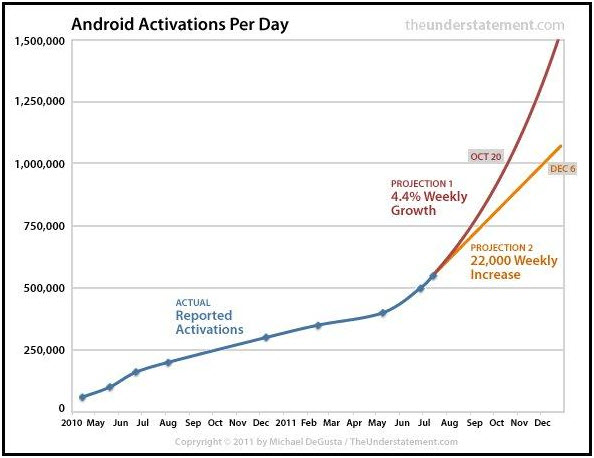This blog is the second in the series of blogs where we are trying to analyze the usage of Android for embedded systems other than smartphones and tablets.
We would analyze Google Android for the Consumer Device Market. We would consider 2 things as we discussed in the earlier blog.
- Analyze Google’s strategy towards Android for the Consumer Devices Market
- What are the options you have if you are planning to make a “consumer device”are you are considering Android as a possible OS option on that.
Google’s Android Business Model
Before we delve into Google’s strategy for Android, we should understand Google’s Revenue Model and its business sense behind Google Android. An interesting article on Google’s revenue equation comes to my mind (http://mashable.com/2009/07/11/google-equation/ ) .This was published at the time Google came out with Chrome in 2009.
The article clearly indicated how Google was monetizing the web by a simple equation “Google Revenue = Amount of time on Internet”. Every product from the Google stable tries to get you onto the web and makes you spend your time on it, while Google would earn its advertising dollars by click revenue, impression revenue and the like.
Advertising has been and is the biggest revenue churner for Google. You can review its financial tables (http://investor.google.com/financial/tables.html ) to quickly cross check what their advertising revenue is like.
In 2010, Google made 28 Billion in advertising revenue (96% of its total revenue). Wow!! So it is fair to say that’s the only way Google makes money.
Google realized early enough that smartphones would be outselling PCs one day. [It actually happened in the last quarter of 2010 where the smartphone sold a bit more than 100 million units and the PC sales was 92 million units]. Google was guiding PC users to the web and its search using its host of web related services like Gmail, YouTube, Maps, Checkout, etc. In the PC, though the operating system is Microsoft Windows, users have the option to choose what website they visit, what they use for search, etc. Even then Google did not want to take things for granted and offered the User with a host of free apps and options to make them use Google products and eventually use Google search, view Google Ads. The list includes Chrome Browser, Google Desktop, Google Calendar, Google Docs, Mail, Maps, etc. all for FREE so that the user is tied up to Google’s services. Above all Google also came up with the Chrome OS as an alternative to Microsoft. This is a strategy to have people spend more time on the internet and keep them bounded with Google services so that they can make their Ad dollars and also can collect enough data and position their Ads better.
NaturallyGoogle, wanted to have the same upper hand in the mobile space as well. In the smartphone market it had more problems than the PC, if it did not dominate. Easily the search and other services could be very closely tied up with the phone (like Phone 7 would be tied to Bing) thereby discouraging usage of Google. This would prove too costly for Google and as a result there was a huge need for Google to dominate this space. And Google came up with the master stroke, Android.
Quickly Google bought over Android, integrated it smoothly with its services, made it technically superior along with amazing User Experience, formed an open handset alliance (OHA) with who-is-who in the mobile space and made it free and open source for all to adapt and use, opened up the SDK for developer community, created the Android Market space and took pains to certify devices and maintain the market.
All of this was not overnight but was a well thought out strategy executed from late 2004 onwards. The results of this effort have been amazing.
The growth of Android Activations (the activation that users perform on buying the handset) is up by 4.4% per week. The graph by theunderstatement.com predicts that it would have reached 1 million activations per dayby end of Oct

It was 550K per day as revealed by Mr. Larry Page during the earnings call in July 2011. Now it is reaching one million. There are already 190 million Android Devices in the market that are activated and in use, revealed Page in the Q3 earnings call on Oct 13th 2011. And by the way he also revealed Google’s mobile revenue run rate is now 2.5 Billion Dollars which is up by 150% of last year.
This clearly explains Google’s business strategy with Android.
So the bottom line is that, “Google wants to dominate anything that has a potential to get on the web, the more it gets on the web the more aggressive Google is on commoditizing it. It wanted to dominate the mobile space (most internet intensive device in the near future) and came out with Android. The open source, stable mobile platform which we got was a by-product of this venture. Google’s Android has been a win-win and its success vouches for that fact.
As a continuation to this series, in the next blog we would analyze the king of the consumer device space, TV and Android’s influence on it.




